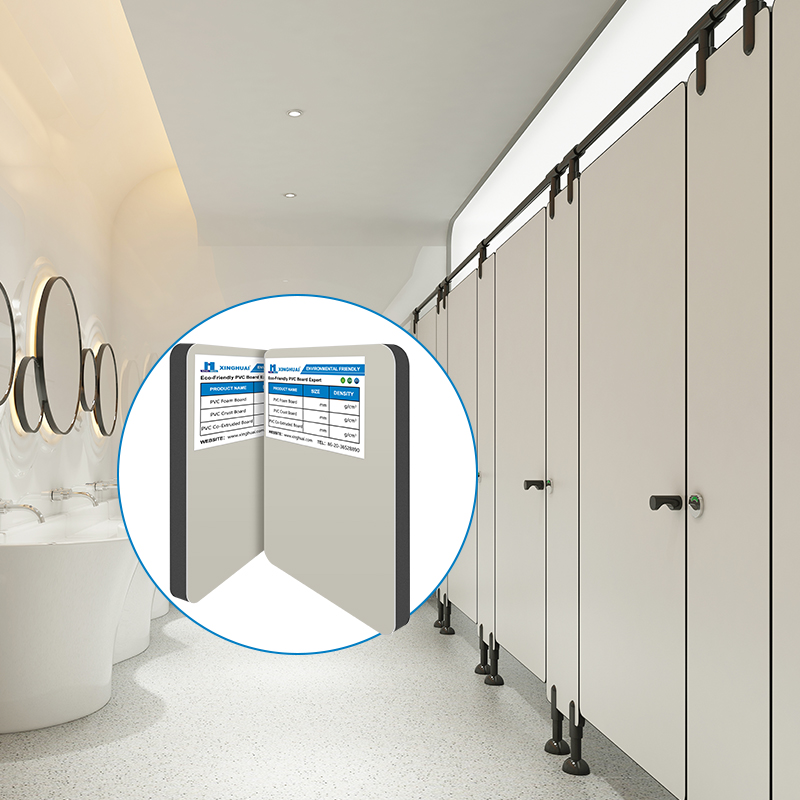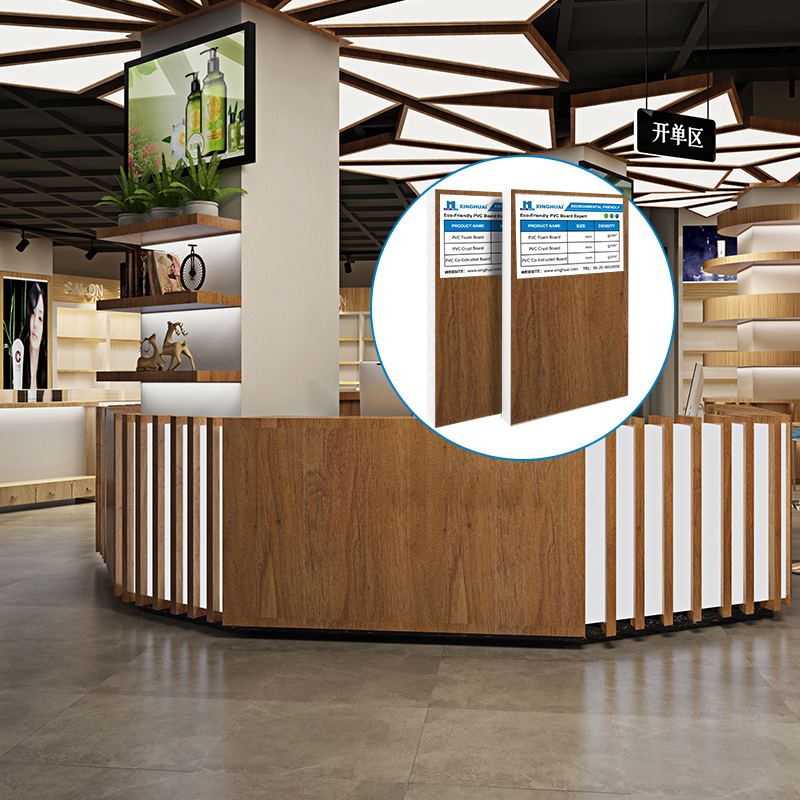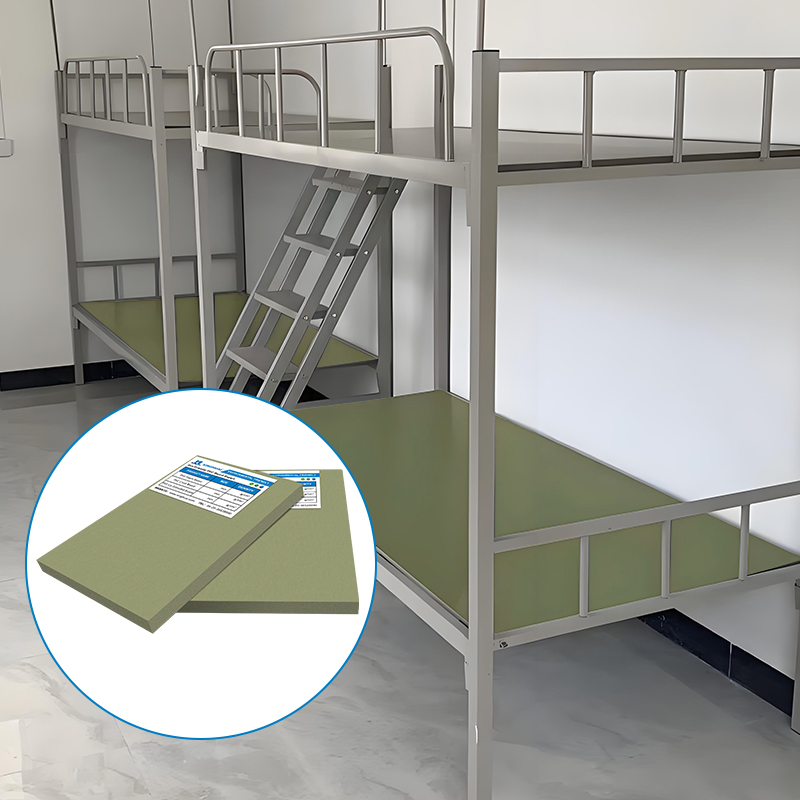fängt freie Radikale ab und verzögert so den Abbau.
ASTM G154: Dieser Standard verwendet eine fluoreszierende UV-Kammer, um die Exposition im Freien zu simulieren.
Das Bestehen eines Tests von 3.000 Stunden (entspricht 5 Jahren im Freien) gilt als äußerst UV-beständig.Fallstudien aus der Praxis:Im Wüstenklima Dubais, unbeschichtet PVC-Hartschaumplatte innerhalb von 18 Monaten abgebaut, während beschichtete Versionen nach 5 Jahren keine sichtbaren Schäden zeigten.
In Norwegens Sommermonaten mit hoher UV-Strahlung weiße PVC-Platte mit HALS-Zusätzen behielten 90 % ihrer Farbe, im Vergleich zu 50 % bei unveränderten Blättern.5. Anwendungsrichtlinien für UV-exponierte UmgebungenZonen mit hoher UV-Strahlung (z. B. Tropen)
:Priorisieren schwarze PVC-Schaumplatte oder
PVC-Hartschaumplatte mit Acrylbeschichtungen.
Vermeiden Sie dünne
PVC-Platte in Weiß (<3 mm) für vertikale Oberflächen; verwenden Sie eine Dicke von 6–10 mm für horizontale Anwendungen.Gemäßigte UV-Zonen (z. B. gemäßigtes Klima):
PVC-Schaumplatte mit UV-stabilem Laminat eignet sich für Außenbeschilderungen und Terrassenbeläge.Erneuern Sie die Schutzbeschichtungen alle 3–5 Jahre für weiße PVC-Platte
in stark frequentierten Bereichen.Zonen mit geringer UV-Strahlung (z. B. nördliche Regionen)
:
Unbeschichtet PVC-Platte in Weiß kann für kurzfristige Projekte (≤3 Jahre) ausreichend sein.Verwenden
schwarze PVC-Schaumplatte für Langzeitanwendungen, um den natürlichen UV-Schutz von schwarzem PVC-Schaumstoff zu nutzen.6. Fazit: Kosten und Leistung im Gleichgewicht
PVC-Platten variieren stark in PVC-Platten weiße Farbe UV-Beständigkeit, mit schwarze PVC-Schaumplatte
und beschichtet
PVC-Hartschaumplatte bietet den besten Schutz. Während PVC-Platte in Weiß Und
weiße PVC-Platte Benötigen Additive oder Beschichtungen, um schwarze PVC-Schaumplatten längerer Sonneneinstrahlung standzuhalten? Fortschritte bei der weißen Farbe von PVC-Platten in Nanopigmenten und der Co-Extrusionstechnologie schließen die Leistungslücke. Für kritische Außenanwendungen lohnt sich die Investition in UV-behandelte Produkte (z. B. PVC-Schaumplatte (mit integrierten UV-Barrieren) PVC-Platten in Weiß gewährleisten eine lange Lebensdauer, während bei preisgünstigeren Projekten bei regelmäßiger Wartung eine kürzere Lebensdauer akzeptabel sein kann. PVC-Platten in Weiß Durch das Verständnis der Materialbeschränkungen und die Nutzung der Herstellergarantien können Benutzer die Leistung von PVC-Platten selbst in den UV-intensivsten Umgebungen optimieren.
Application Note: Used in marine environments, PVC hard foam board with added 防霉剂 (mold inhibitors) resists both UV and saltwater degradation.
White PVC Board Sheet
Decorative vs. Functional Grades: Budget white PVC board sheet for indoor use lacks robust UV additives, fading rapidly outdoors. pvc foam panel sheet Premium versions (e.g., with 5–8% hindered amine light stabilizers, HALS) maintain color stability for 8–10 years.
Thickness Factor: A 6mm white PVC board sheet is 40% more UV-resistant than a 3mm sheet due to deeper pigment distribution pvc hard foam board. Thicker boards are preferred for outdoor furniture and signage.
PVC Foam Panel Sheet
Core Composition: Medium-density PVC foam panel sheet (0.5–0.7g/cm³) with a cross-linked polymer core offers better UV resistance than low-density foam. The cross-linking reduces chain scission from UV exposure.
Surface Treatment: Laminated PVC foam panel sheet with a 0.1mm UV-protective film (e.g., polyester or PVC co-extrusion) reduces surface erosion by 70%, making it suitable for outdoor wall panels pvc hard foam board.
3. Factors Influencing UV Resistance
Pigment Type and Loading:
Carbon black in black foam PVC sheet provides the highest natural UV protection (equivalent to SPF 100+).
Titanium dioxide in PVC sheet white colour requires precise dispersion; agglomerated particles create weak spots.
Additives:
HALS and benzotriazole UV absorbers pvc hard foam board in white PVC board sheet scavenge free radicals, delaying degradation.
Antioxidants in PVC hard foam board prevent oxygen-induced chain breakage during UV exposure.
Manufacturing Process:
Co-extrusion (e.g., in PVC foam panel sheet) bonds a UV-resistant skin to the foam core, enhancing durability without additional coatings pvc hard foam board.
Post-production lamination adds a protective layer but may delaminate if improperly applied pvc hard foam board.
4. Practical Testing and Standards
ASTM G154: This standard uses a fluorescent UV chamber to simulate outdoor exposure. A black foam PVC sheet passing 3,000 hours of testing (equivalent to 5 years outdoors) is considered highly UV-resistant.
Real-World Case Studies:
In Dubai’s desert climate, uncoated PVC hard foam board degraded within 18 months, while coated versions showed no visible damage after 5 years.
In Norway’s high-UV summer months, white PVC board sheet with HALS additives retained 90% of its color, versus 50% for unmodified sheets.
5. Application Guidelines for UV-Exposed Environments
High-UV Zones (e.g., Tropics):
Prioritize black foam PVC sheet or PVC hard foam board with acrylic coatings.
Avoid thin PVC sheet white colour (<3mm) for vertical surfaces; use 6–10mm thickness for horizontal applications.
Moderate-UV Zones (e.g., Temperate Climates):
PVC foam panel sheet with a UV-stable laminate is suitable for outdoor signage and decking.
Refresh protective coatings every 3–5 years for white PVC board sheet in high-traffic areas.
Low-UV Zones (e.g., Northern Regions):
Uncoated PVC sheet white colour may suffice for short-term projects (≤3 years).
Use black foam PVC sheet for long-term applications to leverage black foam pvc sheet carbon black’s natural UV shielding.




